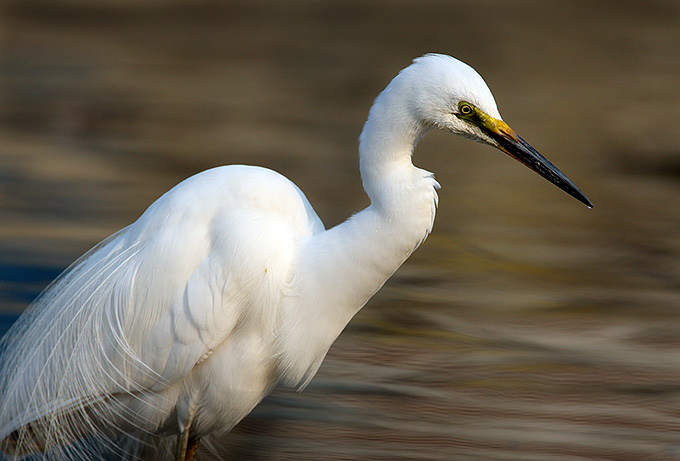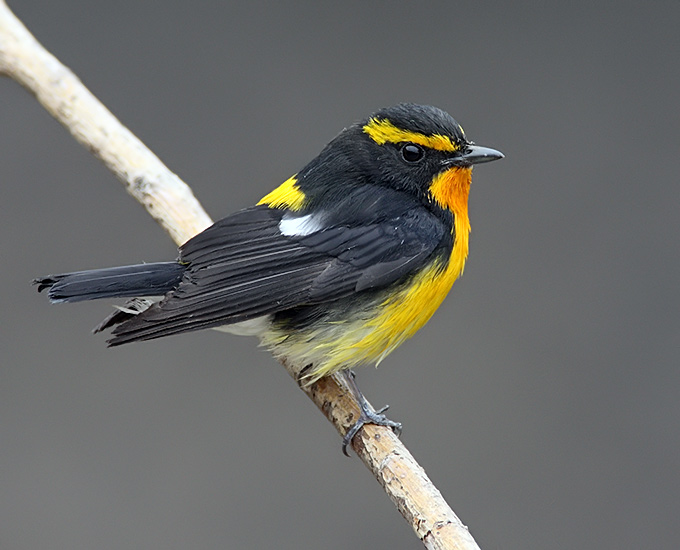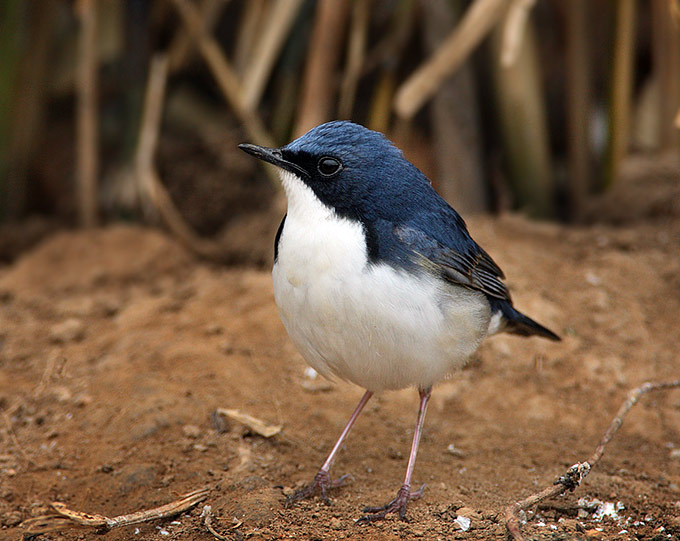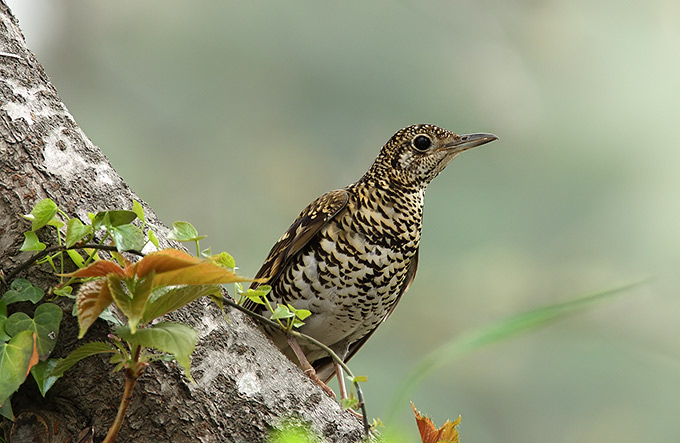The wind-induced long stay at Eocheong-do resulted in many photographs, and the suggestion was made that I collect a few into a "photographer's perspective" on the week of birding. What follows can be seen and read in conjunction with the trip report posted in April's Latest Bird News; my comments here are mainly for fellow photographers who might be interested in f-stops and such. Please note, though, that I am relatively new to digital photography (and to bird photography, for that matter – my first 40 years of birding were with binoculars or telescope only) – so please take these comments with that in mind.
Indeed, photography took up only a portion of my time in the field. Getting even a single picture can take a great deal of time, and I find that I usually end up striking a balance between photography and simply searching for birds. For large parts of the day, then, I go without the camera (I feel almost unbearingly light and free such times!); very early morning, mid-day, and late evening are all usually sans camera. Usually, of course, I find the best birds during such times…
Very early morning is too dark (or foggy) for good pictures; mid-day is too light. Best times are early to mid morning and late afternoon. This first picture is of the very abundant Black-faced Bunting in late-afternoon light. I got near the ground for this picture, and the light was directly on the bird, etching its feathers wonderfully. A good general rule for this sort of light is to try and point your shadow straight at the subject. The longer the shadow, the better!

Quality of light is of first concern; I find it makes the biggest difference between pictures. Another thing is setting and background. The following pictures of Blue and White Flycatchers show what I mean. Here is one feeding on the ground – not a particularly beautiful setting, but the gorgeous bird makes up the difference!


This second picture is set against a background of grass and flowers. The Blue and Whites tend to be quite tame, especially when you stay still for a while and let them come to you.
This bird decided that it liked a shrub nearby and returned again and again to the same spot.

This Brambling is another common (but very handsome) bird on the island; again, the setting of leaves, cones and flower-tassels makes the picture worthwhile for me.

This Chinese Grosbeak was photographed from some distance, but the surrounding ivy is very attractive. It is nice to fill the frame with a bird, but a good background adds much to a picture. Just as importantly, keeping some distance creates less disturbance for the bird. I HATE flushing my subjects, and always try to choose the bird's peace over what I call an "eyelash detail" shot. When I do get eyelash detail, it is almost invariably because I wait for the bird to come to me. This takes time and patience, of course, but it is very satisfying when a bird flies or hops toward and not away from you.

This Green Sandpiper illustrates my point. I hid under a boat at some distance from this bird; it was then flushed by a man working on another boat. After he left, the sandpiper returned – but much closer! Hence some photos. When I left, sliding behind the boat and then away, the sandpiper never knew I was there.
The egret was on the same stretch of mud.

Here are two different Narcissus Flycatchers – one a greeny-backed "Owstoni-type" and the other a nominate narcissina. The first was directly lit by late afternnon light:

While the second was frequenting a small water-pool below the reservoir. It was extremely tame, and kept returning (as flycatchers do) to a snag of branch. The side of the pool (old mossy concrete) made a uniformly dark background. I stood in a little hut (part of the waterworks) and took as many pictures as I wished – the only drawback was dim lighting.

Flycatchers have an attractive way of spreading or drooping their wings (especially as they like to bathe).

The Siberian Blue Robin is one of my favourites. They often appear in small plowed places; this one was inside a chicken run. Again, 15 minutes or so of (my) standing still taught the bird to ignore me, and it came very close (as did the chickens).

This picture of a Siberian Stonechat was taken in direct late afternoon light. The stonechats had been somewhat uncharacteristically shy during the preceding days, but the sudden appearance of sunshine and calmer winds seemed to delight them, and this individual flew in quite close then hopped around quite unconcerned by my presence.

This other stonechat picture was taken very near the preceding one but facing in a different direction – the lighting is not as fine, but the pea flowers make up for it!

This White's Thrush is perhaps my favourite picture from the trip – the diagonal of the tree trunk, the ivy and the green background make a fitting context for one of the world's prettiest thrushes<…>/p>
Back to the harbour for this Wood Sandpiper – also photographed from behind the boat, and also helped by late afternoon light.


The final photo for this Eocheong report is this plump and handsome Yellow-breasted Bunting – no question what it eats! Not a perfect shot but I didn't want to move position and bother him at his meal. Too much stalking usually (1) disturbs the bird and (2) loses the picture; usually waiting is the better strategy.
Equipment note: all images taken with a Canon 1D Mark III camera and a 600mm f4 lens with 1.4 teleconverter. I shoot in RAW then process with Photoshop.



